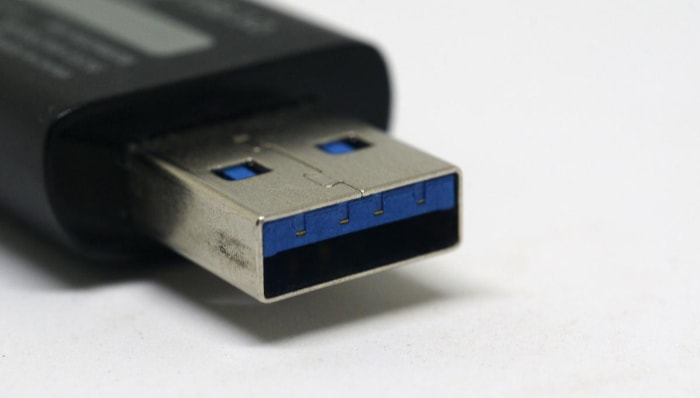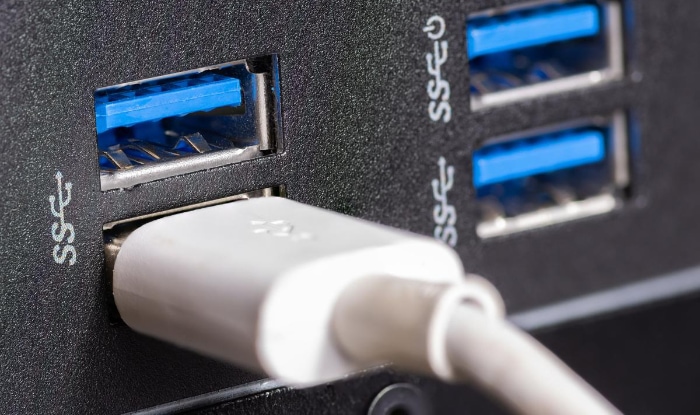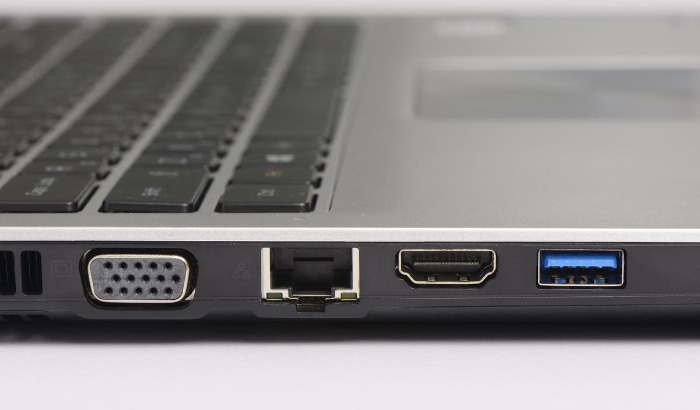USB 3.1 Gen 1 vs. Gen 2: Making Sense of USB Standards

Understanding the world of Universal Serial Bus (USB) standards can be an intimidating task. As technology advances, these standards continually evolve, leading to an array of terms and specifications that can confuse even tech-savvy individuals.
This blog post aims to demystify one such area of confusion – USB 3.1 Gen 1 and Gen 2.
USB standards play a critical role in our daily lives. They’re essential for data transfer, charging devices, and connecting peripherals to our computers.
Hence, a firm grasp of the differences between USB 3.1 Gen 1 and Gen 2 can prove to be immensely beneficial, be it for making informed purchasing decisions or troubleshooting tech issues.
USB 3.1 – An Overview
USB 3.1 is the third major revision of the Universal Serial Bus (USB) standard for interfacing computers and electronic devices. Introduced in July 2013 by the USB Implementers Forum (USB-IF), this standard heralded a significant leap in data transfer speeds and charging capabilities compared to its predecessor, USB 3.0.
The Birth of USB 3.1 Gen 1 and Gen 2
USB 3.1 was initially released in a single version, which is now known as USB 3.1 Gen 2. A year later, to streamline the USB standard and integrate all previous versions under a unified umbrella, USB 3.0 was rebranded as USB 3.1 Gen 1.
Thus, while USB 3.1 Gen 2 was a new and improved version, USB 3.1 Gen 1 was essentially a rebranded version of USB 3.0.
Key Features of USB 3.1
USB 3.1 brought a host of improvements over the earlier USB standards, some of which include:
Increased Data Transfer Speeds: USB 3.1 Gen 2 offers data transfer rates of up to 10 Gbps, twice the speed of USB 3.1 Gen 1 (and USB 3.0), which tops out at 5 Gbps.
Improved Power Delivery: USB 3.1 introduced enhanced power delivery, allowing devices to draw up to 100W of power, making it possible to charge larger devices like laptops via USB.
Backward Compatibility: USB 3.1 maintained backward compatibility with older USB versions, meaning devices with USB 3.1 ports can connect with devices using USB 3.0, 2.0, or even 1.1, provided the correct cable is used.
Introduction of Type-C Connector: Along with USB 3.1, a new reversible connector, USB Type-C, was introduced, which made plugging in a USB cable a breeze since there is no need to worry about the plug’s orientation.
By understanding these foundational aspects of USB 3.1, we can now delve deeper into the specific traits and distinctions of USB 3.1 Gen 1 and Gen 2.
USB 3.1 Gen 1: An In-Depth Look
USB 3.1 Gen 1, originally known as USB 3.0, is a version of the Universal Serial Bus standard that significantly improved upon its predecessor, USB 2.0. While the name may have changed, the technical specifications have remained the same, providing users with enhanced data transfer speeds and higher power delivery compared to older standards.
Features of USB 3.1 Gen 1
Speed: USB 3.1 Gen 1 offers data transfer rates of up to 5 Gbps, a substantial improvement over the 480 Mbps offered by USB 2.0. This increased speed allows for swift file transfers and the smooth operation of high-bandwidth devices.
Power Output: USB 3.1 Gen 1 supports higher power output compared to USB 2.0. It can deliver up to 900mA at 5V, allowing for faster charging of connected devices.
Compatibility: USB 3.1 Gen 1 maintains backward compatibility with USB 2.0. This means you can use USB 2.0 devices with USB 3.1 Gen 1 ports and vice versa, albeit at the lower USB 2.0 speed.
Common Use Cases for USB 3.1 Gen 1
USB 3.1 Gen 1 finds application in a wide range of scenarios due to its faster speed and increased power delivery. Some common use cases include:
Data Transfer: The higher transfer rate of USB 3.1 Gen 1 makes it suitable for transferring large files between devices, such as moving videos or backing up large quantities of data to an external hard drive.
Device Charging: The higher power output of USB 3.1 Gen 1 allows for quicker charging of devices like smartphones, tablets, and some smaller laptops.
Peripheral Connection: The speed and power capabilities of USB 3.1 Gen 1 are ideal for connecting peripherals such as printers, scanners, and external displays to a computer.
By understanding USB 3.1 Gen 1 in depth, you can fully appreciate the advancements it brought to the USB standards and how it paved the way for further improvements in Gen 2.
USB 3.1 Gen 2: An In-Depth Look

USB 3.1 Gen 2 represents a significant step forward in the evolution of the Universal Serial Bus standard. It doubles the data transfer rate of Gen 1 and maintains the same high power delivery, all while retaining backward compatibility with older USB standards.
This makes it an appealing choice for many high-bandwidth applications and quick device charging.
Features of USB 3.1 Gen 2
Speed: USB 3.1 Gen 2 doubles the data transfer rate of its predecessor, offering speeds of up to 10 Gbps. This increase makes it a superior option for demanding tasks such as high-resolution video streaming, gaming, and real-time data backup.
Power Output: Like USB 3.1 Gen 1, Gen 2 supports power delivery up to 100W (with the right cables and power adapters). This allows for faster charging of a broad range of devices, including larger laptops.
Compatibility: USB 3.1 Gen 2 maintains backward compatibility with previous USB versions, including USB 3.1 Gen 1 and USB 2.0. However, to leverage the full speed of Gen 2, both the port and the device need to support it.
Common Use Cases for USB 3.1 Gen 2
The significant increase in data transfer speed and power output make USB 3.1 Gen 2 a valuable choice for many situations:
High-Speed Data Transfer: The fast data transfer speeds make Gen 2 a top choice for transferring large data files or operating high-speed peripherals, such as high-definition webcams and external SSDs.
Device Charging: The high power delivery makes USB 3.1 Gen 2 a practical choice for charging larger electronics like laptops, in addition to smartphones and tablets.
Audio/Video Streaming: The increased bandwidth is particularly beneficial for audio and video streaming applications. Devices like 4K webcams and professional audio interfaces can take full advantage of the high-speed data transfer.
Understanding USB 3.1 Gen 2’s advanced features and its advantages over Gen 1 offers a clear picture of its potential and illustrates why it has become the new standard for many manufacturers and consumers alike.
USB 3.1 Gen 1 vs Gen 2: The Comparative Study
Comparing USB 3.1 Gen 1 and Gen 2 allows us to better understand their distinctive features, advantages, and potential limitations. By examining their speed, power output, and compatibility, we can make more informed decisions regarding their use in various scenarios.
Speed Comparison: Gen 1 vs Gen 2
While both Gen 1 and Gen 2 represent substantial improvements over previous USB standards, the standout difference lies in their data transfer speeds. USB 3.1 Gen 1 offers a respectable speed of up to 5 Gbps.
However, USB 3.1 Gen 2 doubles this, boasting speeds of up to 10 Gbps. This makes Gen 2 significantly faster and an ideal choice for applications that require high-speed data transfer.
Power Output Comparison: Gen 1 vs Gen 2
In terms of power output, both Gen 1 and Gen 2 offer similar levels. They both support power delivery up to 100W (with the appropriate cables and adapters).
This provides faster charging times compared to older USB standards and even allows for the charging of larger devices such as laptops.
Compatibility Comparison: Gen 1 vs Gen 2
Both USB 3.1 Gen 1 and Gen 2 maintain backward compatibility with older USB standards, which means they can interface with devices that use previous versions, such as USB 2.0. However, it’s worth noting that to harness the full capabilities of either Gen 1 or Gen 2, both the device and the port must support the same generation.
How to Choose Between USB 3.1 Gen 1 and Gen 2
The choice between USB 3.1 Gen 1 and Gen 2 largely depends on your specific needs and requirements. Both standards offer unique benefits, but understanding their differences can help you decide which is more suitable for your particular use case.
Considerations for Making the Right Choice
Several key factors should be taken into account when choosing between USB 3.1 Gen 1 and Gen 2:
Data Transfer Needs: If your activities involve transferring large files, streaming high-resolution videos, or using high-speed peripherals, the superior speed of USB 3.1 Gen 2 could be a significant advantage.
Device Compatibility: Although both Gen 1 and Gen 2 are backward compatible with older USB standards, to take full advantage of their respective speeds, your devices and cables must support the same standard.
Cost Considerations: USB 3.1 Gen 2 devices and cables are often more expensive than their Gen 1 counterparts due to their higher performance capabilities. If speed is not a crucial factor, opting for Gen 1 could lead to considerable savings.
Scenario-based Recommendations
For Everyday Tasks: If you’re primarily using USB for everyday tasks like charging devices, transferring small files, or using basic peripherals, USB 3.1 Gen 1 should be more than adequate for your needs.
For High-Performance Needs: If you’re a professional photographer, video editor, or gamer, or if you regularly transfer large files, USB 3.1 Gen 2, with its high-speed data transfer capabilities, would be a more appropriate choice.
For Future-proofing: If you want to invest in technology that will remain relevant for longer, opting for USB 3.1 Gen 2 might be wise, as more devices and peripherals are moving towards this standard.
The Future of USB

The constant advancements in USB technology highlight a continual drive towards faster speeds, higher power delivery, and more efficient data transfer protocols. With each iteration, USB standards are becoming more refined and feature-rich.
The Advent of USB4
The latest development in the USB space is USB4, which promises to revolutionize the standard yet again. It combines the best features of USB and Thunderbolt, delivering speeds of up to 40 Gbps – quadruple that of USB 3.1 Gen 2.
USB4 is backward compatible with USB 3.2, USB 2.0, and even Thunderbolt 3, promising a seamless user experience.
Greater Power Delivery
As we increasingly rely on USB connections to power our devices, we can expect future USB standards to support even higher power delivery levels. This could mean a future where a single cable type is sufficient to power all our devices, from smartphones to laptops to potential larger appliances.
Improved Data Protocols
The evolution of USB is not just about speed and power but also about improving data handling. Future versions may come with more sophisticated data transfer protocols, reducing latency and improving efficiency, which would be particularly beneficial for time-critical applications.
Enhanced USB Type-C Usage
With the introduction of USB4, the reversible USB Type-C connector is becoming the standard. This user-friendly connector could eventually replace older USB Type-A and Type-B connectors, simplifying cable management and device connection.
Conclusion
Deciphering the world of USB standards can indeed be a complex task, given the multitude of versions and specifications that exist. However, a detailed understanding of these standards, specifically USB 3.1 Gen 1 and Gen 2, can enable us to make more informed decisions when purchasing and utilizing technology.
Both Gen 1 and Gen 2 provide substantial enhancements over their predecessors, improving data transfer rates and power delivery. The choice between the two comes down to specific user needs, with Gen 1 serving adequately for most daily tasks, while Gen 2 comes into its own when high-speed data transfer is paramount.
Looking to the future, the evolution of USB technology shows no signs of slowing down. With the advent of USB4 and the increasing adoption of the USB Type-C connector, we can expect further improvements in speed, power delivery, and efficiency.
As consumers and users of technology, staying aware of these changes allows us to adapt and reap the benefits of these advancements.
In conclusion, the intricacies of USB technology, while challenging to navigate, are essential for maximizing our interaction with the digital devices that permeate our daily lives. An understanding of the differences between USB 3.1 Gen 1 and Gen 2, and the direction in which USB technology is headed, equips us with the knowledge to navigate this ever-evolving landscape.


